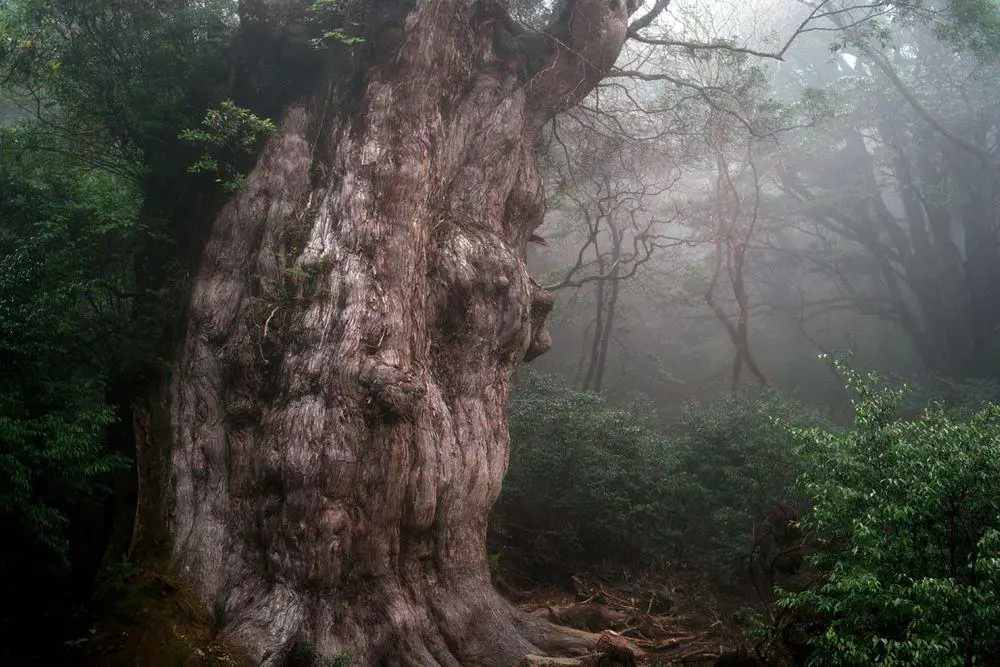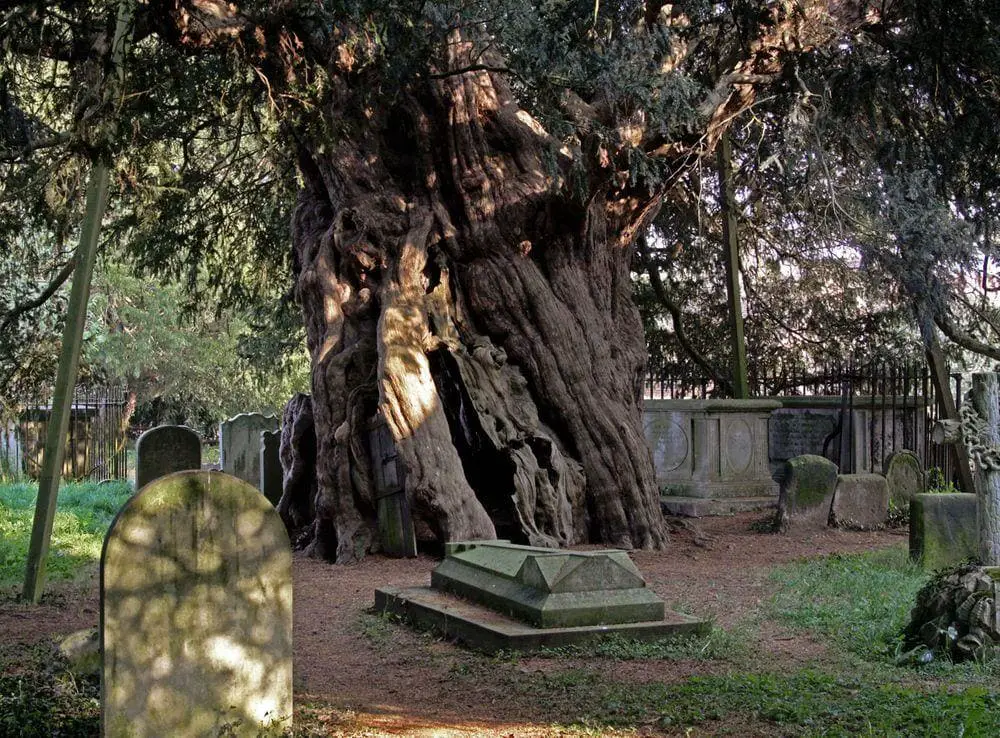 In short
In short
The enormous Payhembury Yew at the medieval St. Mary Church is a very old tree. Now it has divided into four separate trunks around the empty place where in the past was the central trunk.
 36.5%
36.5%
GPS coordinates
Location, address
Species
Circumference
Map of the site
If you see this after your page is loaded completely, leafletJS files are missing.
 In detail
In detail
Payhembury is a small, picturesque village in the eastern part of Devon.
St Mary’s church (and inn!)
The small Payhembury church is a fine example of Perpendicular Gothic style – it was constructed in 15th – 16th centuries, its tower might be even older. The church was thoroughly reconstructed in 1895-1897. (2.) The church has six bells that were installed centuries ago.
Today these six bells are better known due to a historical church house from the 17th century, named “Six Bells Inn”. It was built to house masons of the church and now is a respected inn.
Payhembury Yew
The ancient yew tree grows in the church garden, north-east of the church, on a small mound.
It rather well discernible that the four current trunks of Payhembury Yew belong to a single plant, a male tree. The central part of the tree a longer time ago hollowed out and was gradually lost.
The tree is mentioned in “Travels in Victorian Devon, Illustrated Journals and Sketchbooks 1846 – 1870” (compiled by Jeremy Butler from Peter Orlando Hutchinson’s notebooks, see the book on Amazon below), where it was visited in 1859. Already then Payhembury Yew had four trunks and locals explained that long ago a lightning struck the tree and divided it into four parts. (3.)
The circumference around these four trunks at the ground level is 10.62 m (1998), there are also reports about a bigger circumference, e.g. 11.46 m at the height of 0.05 m (4.). The individual trunks are 4 m, 3.9 m, 3.4 m, and 2.7 m in circumference.
As it is usual, people love to guess the age of the tree. Payhembury Yew is assumed to be 2,000 years old – but there is no factual basis for this assumption. Nevertheless, the tree definitely is very old.
Most likely, the yew is significantly older than the church. There is a possibility that the yew was a locally significant landmark, possibly, a sacred tree and this was the reason for the selection of this location for a church.
References
- Yew/Yews at Payhembury England, Ancient Yew Group. Accessed on December 3, 2023.
- England & Wales Hardwicke Marriage Index, Marriages 1754 – 1837, Payhembury St Mary. Accessed on December 2, 2023.
- ONE YEW OR MORE?, Waymarking.com. Accessed on December 3, 2023.
- The Payhembury Yew, Ancient Tree Inventory. Accessed on December 3, 2023.
Payhembury Yew is included in the following article:
 Linked articles
Linked articles

Wonders of England
The natural and cultural wonders of England are very diverse and here are found some of the world’s most impressive landmarks in several categories, such as churches and museums.

Trees
The category includes some of the most impressive and interesting separate trees in the world. The total number of tree species in the world still is a wild guess – maybe 10,000 and maybe 100,000 but most likely somewhere in between. Every month there are reported new tree species from the whole world, including Western Europe.

Wonders of the United Kingdom
Throughout many centuries the United Kingdom has enjoyed relative political stability and wealth. As a result, humans have created here countless amazing and well-preserved values of art and history.
 Recommended books
Recommended books
The Ancient Yew: A History of Taxus baccata
The gnarled, immutable yew tree is one of the most evocative sights in the British and Irish language, an evergreen impression of immortality, the tree that provides a living botanical link between our own landscapes and those of the distant past. This book tells the extraordinary story of the yew’s role in the landscape through the millennia, and makes a convincing case for the origins of many of the oldest trees, as markers of the holy places founded by Celtic saints in the early medieval ‘Dark Ages’.



